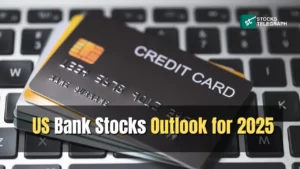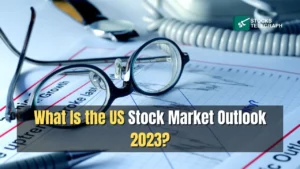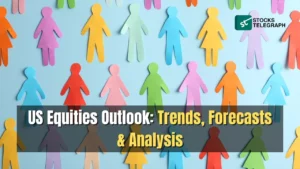Astute investors recognize the importance of staying informed about the potential macro risks and opportunities that shape the US investment outlook.
The intricacies of economic data, Federal Reserve policy shifts, and global dynamics create a complex set-up that demands keen attention.
As market conditions continue to be influenced by an array of factors, from interest rate movements to trade dynamics, investors face a dynamic environment that demands strategic adaptability.
In this comprehensive analysis, we delve into the nuanced interplay of these elements.
By understanding the potential risks and identifying emerging opportunities, investors can navigate this landscape with confidence, positioning themselves to make informed decisions about US investment outlook that align with their financial goals.
An Overview of the Market Today
In the current state of the investment arena, a shifting US investment outlook comes into view. Bond markets have navigated a challenging stretch with soaring yields, driven by an unexpected rise in Treasury supply.
The robust US economy, defying expectations, has contributed to this trend. Notably, Japanese government bond yields reflect rising inflation and policy adjustments.
A curious element in the US markets outlook 2023 is the eurozone’s benchmark yield increase, defying easy explanation.
Market veteran Edward Yardeni’s notion of “bond vigilantes” has resurfaced, hinting at investor pushback against loose fiscal policy. In the backdrop, futures show significant short positions in US notes.
While higher rates often deter foreign bond demand, Japan’s case contrasts predictions, with continuous foreign bond purchases.
Amidst this, the US job market’s evolution and Eurozone inflation trends are in focus.
As the market navigates these different crosscurrents, the narrative continues to shift, framing the delicate balance between global forces and domestic stability, which has always defined the US investment outlook.
Macro Risks to Keep in Mind
Analysts point out a number of macroeconomic risks for investors to consider for US stocks, given the current state of the market.
The most pertinent risks relating to the US investment outlook are discussed below, as follows:
-
Federal Reserve Rate Hike Expectations
The anticipation of the Federal Reserve increasing interest rates based on strong economic data can lead to increased borrowing costs for both businesses and consumers, which impacts US stock outlook today.
This could hinder corporate profitability, slow down consumer spending, and potentially reduce the attractiveness of equities relative to fixed-income investments, impacting overall investment strategies.
-
Equity Prices and Volatility (VIX)
A stronger dollar and rising interest rates can lead to higher volatility amid the US equity market outlook.
Increased volatility can make it harder to predict market movements, potentially causing investor anxiety and leading to abrupt market sell-offs.
-
Credit Spreads
Changes in credit spreads linked to a stronger dollar may reflect higher perceived credit risk for U.S. companies, which also contributes to US investment outlook 2023.
This could raise borrowing costs for businesses, potentially affecting their profitability and causing investors to reconsider their exposure to riskier assets.
-
Earnings Yield and Stock Prices
A stronger dollar and wider credit spreads could lead to a decline in US equities outlook as investors reevaluate the attractiveness of equities relative to other investment options.
Higher borrowing costs and reduced earnings due to credit risk might drive down stock valuations.
-
Economic Surprise Index
Economic data releases that deviate significantly from market expectations can lead to sudden shifts in investor sentiment in the US stock market outlook 2023.
Unexpected outcomes can challenge previously established investment strategies, potentially leading to market instability.
-
Market Volatility in September
The effects of U.S. events and data releases on market conditions can create uncertainty and higher volatility.
Elevated volatility might prompt investors to become more cautious, leading to sudden changes in asset allocations and market dynamics.
Investment Opportunities
As we navigate the complex financial arena of late 2023, the looming prospect of Federal Reserve rate cuts casts a shadow on the US investment outlook, yet within this shadow lies a canvas of investment opportunities. The most closely watched of these are discussed below:
-
Anticipating Rate Cuts for Growth
With Fed Funds futures pointing towards substantial policy easing by late 2024, investors can capitalize on the potential boost in economic growth as historically, easing aligns with periods of revitalized industrial production and lower unemployment rates.
-
S&P 500 Resilience
Despite economic slowdown during easing cycles, the S&P 500 has historically managed an impressive 30% return in the two years following easing starts, showcasing its resilience and potential for gains even in challenging macro conditions.
-
Valuation Upside
Lower interest rates during Fed easing led to higher stock valuation multiples, driving a rise in price-to-sales (P/S) ratios. Investors can benefit from this valuation effect, which historically resulted in increased stock prices post-easing.
This is important to consider when considering the US bank stocks outlook, which is closely related to interest rates.
-
Positive Market Signals
Historical data reveals that S&P 500 performance from approximately nine months prior to the start of an easing cycle has often been positive, suggesting potential positive signals for investors in the lead-up to the next easing cycle in May 2024.
-
Stock Returns Post Easing
Except for a couple of instances, most easing episodes correlate with strong stock market returns, indicating that investors can find opportunities in equities during and after Fed easing cycles.
-
Earnings Rebound
Despite a temporary dip around easing cycles, S&P 500 earnings per share tend to rebound over the two-year period following the start of easing, hinting at the potential for recovery and growth.
Conclusion
In the current financial context, where macro risks and emerging prospects dictate investment strategies, staying informed about the US investment outlook is paramount.
Understanding the relationship between economic data, policy shifts, and global dynamics is crucial for investors.
As the investment landscape evolves, from interest rate shifts to trade dynamics, strategic adaptability becomes essential. This comprehensive analysis delves into these complexities, empowering investors with insights.
We have discussed the US investment outlook in terms of shifting bond markets, the influence of global forces, and potential risks like rate hikes and market volatility.
Amidst these, strategic opportunities emerge, including anticipating rate cuts, leveraging S&P 500 resilience, and capitalizing on valuation upside.
With informed insights, investors can confidently shape their financial journey in a nuanced market ecosystem.
Frequently Asked Questions
What Are Some Key Macroeconomic Indicators That Investors Should Monitor to Assess the US Investment Landscape?
GDP growth, unemployment rate, inflation rate, interest rates, exchange rates
How Might Changes in US Monetary Policy, Such as Interest Rate Adjustments, Impact Investment Decisions?
Higher interest rates can make it more expensive to borrow money, which can dampen economic growth and lead to lower stock prices.
What Are the Major Macro Risks Facing US Investments in The Near Future?
Inflation, rising interest rates, geopolitical tensions, supply chain disruptions
What Are the Potential Opportunities That Arise from The Evolving US Economic and Political Environment?
The US economy is still growing, and there are still many attractive investment opportunities, such as technology, healthcare, and consumer discretionary sectors. The US tech stocks outlook is highly encouraging in this context.
How Does the Global Geopolitical Situation Contribute to The Overall Investment Outlook?
The ongoing war in Ukraine and the sanctions imposed on Russia are creating uncertainty in the global economy, which could have a negative impact on investment sentiment.
Are There Specific Sectors or Industries Within the US Market That Are Promising?
Technology, healthcare, and consumer discretionary sectors are all seen as being relatively resilient to economic downturns. The US technology stocks outlook is especially promising.
What Role Does Technological Innovation Play in Shaping the Investment Landscape, And How Should Investors Consider This Aspect?
Technological innovation is constantly changing the investment landscape, and investors need to be aware of the latest trends in order to make informed decisions.
What Strategies or Diversification Approaches Might Investors Consider to Mitigate Their Exposure?
Investors can consider diversifying their portfolios across different asset classes and regions in order to reduce their risk.
How Does the US Investment Outlook Align with Current International Trade Dynamics and Policies?
The article’s analysis suggests that the US investment outlook is somewhat uncertain due to the ongoing trade tensions between the US and China.
What Long-Term Trends Are Driving the Macro Risks and Opportunities in The US Investment Landscape?
The long-term trends such as aging demographics, climate change, and technological innovation as being key drivers of the macro risks and opportunities in the US investment landscape.













